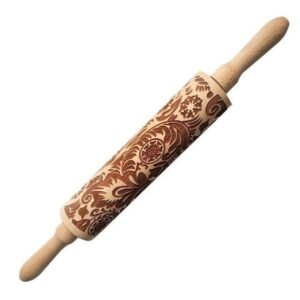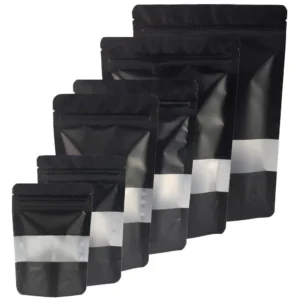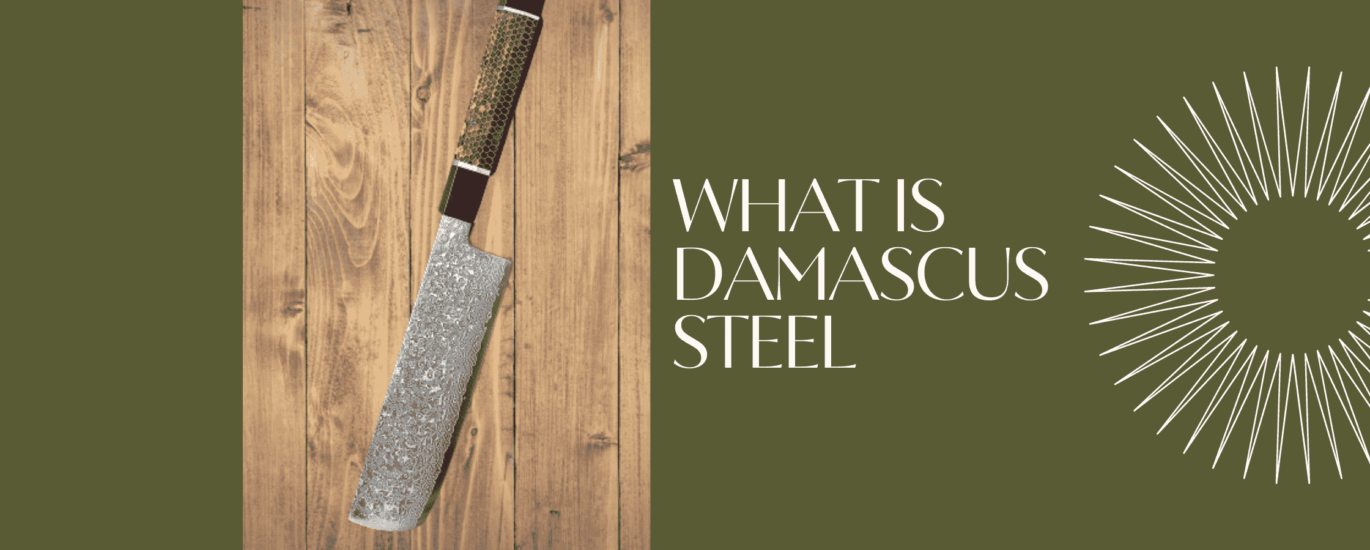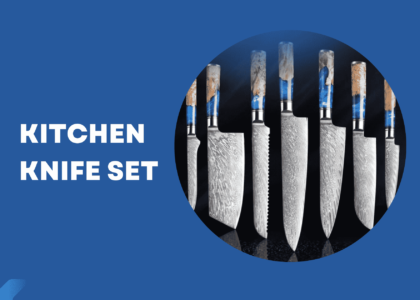Introduction
Definition and Basic Characteristics
Damascus Steel, renowned for its distinctive wavy or watery pattern, is a type of steel that has been utilized for centuries. It’s celebrated not only for its beauty but also for its remarkable strength and sharpness.
Visual Appeal: Patterns and Designs
The intricate patterns and designs visible on Damascus Steel are not merely for aesthetics; they are a testament to the meticulous folding and hammering techniques used during its creation, revealing a marriage of art and metallurgy.

Historical Significance and Usage
Historically, Damascus Steel was used in weaponry, notably in swords, due to its exceptional durability and ability to maintain sharpness. Its usage was a symbol of power and prestige among warriors and royalty.
Origins and Historical Context
Ancient Techniques and Initial Production
The production of Damascus Steel involves a crucible technique, where wootz steel is forged, folded, and hammered, creating its signature patterns and ensuring its strength and resilience.
Geographical Roots and Name Controversy
Despite its name, the origins of Damascus Steel are widely debated. While it’s named after Damascus, Syria, due to its popularity there, its actual place of origin remains a topic of historical discussion and research.
Historical Legends and Myths
Legends often surround Damascus Steel, with tales speaking of its ability to slice through rocks and other metals without dulling. These stories, while exaggerated, underscore the historical impact and reverence for this unique material. Discover more about its detailed history here.
The Making and Properties of Damascus Steel
The Making of Damascus Steel
Traditional Methods: Wootz Steel and Crucible Techniques
The creation of Damascus Steel involves a meticulous process using Wootz Steel and crucible techniques. Historically, artisans melted iron and steel with charcoal, allowing carbon infusion and creating a distinctive pattern upon cooling and forging.
Materials Used: Wootz Steel and Various Alloys
Wootz Steel, a crucial material in Damascus Steel, is combined with various alloys to enhance its properties. The inclusion of materials like nickel and manganese not only strengthens the steel but also accentuates its iconic patterns.
Layering and Forging Process
The layering and forging process of Damascus Steel involve repeatedly folding and hammering the material. This not only develops its signature patterns but also significantly enhances its strength and durability.
Properties and Special Characteristics
Strength and Durability
Damascus Steel is renowned for its exceptional strength and durability. The repeated folding and forging process not only creates its signature aesthetic but also enhances its structural integrity, making it resilient against wear and tear.
Unique Patterns and Aesthetic Qualities
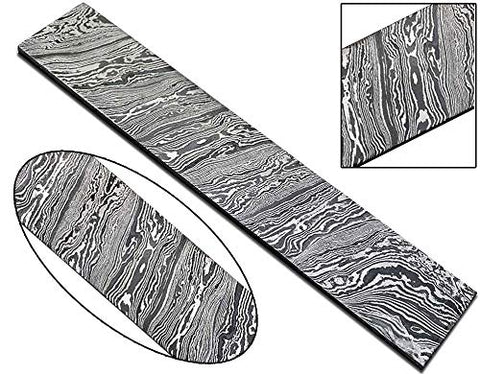
The unique patterns on Damascus Steel, often resembling flowing water or waving grains, are not merely aesthetic but a testament to its complex creation process, symbolizing the mastery of ancient metallurgists.
Comparisons with Other Steels
Compared to other steels, Damascus Steel stands out for its strength, sharpness, and aesthetic appeal. While other high-carbon steels may offer similar durability, the distinctive patterns and historical significance of Damascus Steel are unparalleled.
Modern Reproduction Efforts
Challenges in Replicating Ancient Techniques
Modern metallurgists face challenges in replicating ancient Damascus Steel due to lost techniques and evolving materials. The exact methods and materials remain a mystery, making authentic reproduction a complex endeavor.
Modern Methods: Billet Welding and Crucible Techniques
Modern attempts to recreate Damascus Steel involve methods like billet welding and advanced crucible techniques. Metallurgists layer different steels, forge-welding them together, and then creating patterns reminiscent of traditional Damascus Steel.
Successes and Failures in Reproduction
While modern reproductions can mimic the appearance of Damascus Steel, achieving the exact properties and patterns of the ancient material has been a journey of both successes and failures, with the true secret of its making still eluding modern science.
Strength of Damascus Steel: A Comparative Analysis
Damascus steel is renowned for its exceptional strength and unique pattern, making it a popular choice for various applications. To understand its strength in comparison to other types of steel, a comparative analysis is necessary.
One key factor that contributes to the strength of Damascus steel is its unique composition. It is made by forge welding layers of different types of steel together, creating a patterned appearance. This layering process enhances the material’s strength by distributing the forces and preventing cracks from propagating.
In terms of tensile strength, Damascus steel outperforms many other types of steel. Its layered structure allows it to withstand high levels of tension without breaking or deforming. This makes it ideal for applications that require durability and resistance to bending or stretching forces.
Furthermore, Damascus steel exhibits excellent hardness, which is another indicator of its strength. It has a high carbon content, contributing to its hardness and ability to retain a sharp edge. This makes it suitable for cutting tools and weapons that require a strong, sharp, and patterned blade.
The comparative analysis reveals that Damascus steel possesses exceptional strength compared to other types of steel. Its unique composition, tensile strength, and hardness make it a highly sought-after material for various applications.
Applications and Cultural Significance
Applications in Weaponry and Tools
Swords, Knives, and Axes
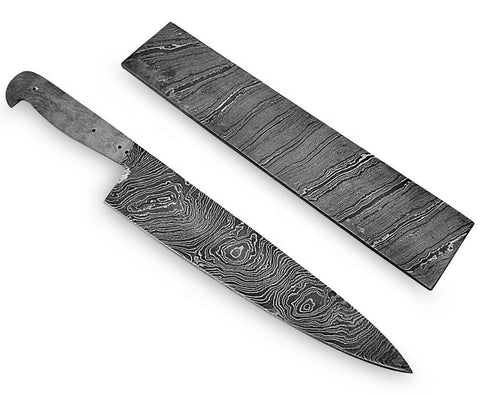
Damascus Steel has been a preferred material in crafting weaponry like swords, knives, and axes due to its remarkable strength and sharpness. The distinctive patterns also added an aesthetic appeal to the deadly functionality of these weapons.
Durability and Sharpness in Combat
In combat scenarios, the durability and sharpness of Damascus Steel were pivotal due to its unique pattern. The steel pattern could endure rigorous use, maintaining its edge through battles, and was often associated with elite warriors due to its superior performance and striking appearance.
Modern-Day Applications
Today, Damascus Steel is utilized in high-end kitchenware, particularly in knives, where the ancient reputation of durability, sharpness, and intricate pattern is a coveted feature. Additionally, it’s used in certain types of razors and outdoor knives, blending historical craftsmanship with modern utility.
Cultural and Symbolic Significance
Symbolism in Various Cultures
In various cultures, Damascus Steel symbolized power, prestige, and superior craftsmanship. The steel was often reserved for the elite, symbolizing status and mastery in battle, and was revered for its aesthetic and functional qualities.
Damascus Steel in Literature and Legends
Damascus Steel permeates literature and legends, often portrayed as a mystical material capable of crafting weapons of unparalleled quality and power. Tales of its indestructibility and unique patterns have fueled stories of legendary warriors and epic battles.
Modern Cultural References
In modern culture, Damascus Steel continues to be a symbol of quality and artistry. It is often referenced in various media, including films and video games, where it is depicted as a material used to craft weapons of legendary status and power.
Damascus Steel in Modern Times
Usage in Contemporary Products
In contemporary products, Damascus Steel is often utilized for its visual appeal and historical significance. From watches to jewelry, the distinctive patterns of Damascus Steel have found a place in various luxury items, marrying ancient artistry with modern design.
Damascus Steel in Popular Media and Games
Damascus Steel often features in popular media and games as a material of legendary status. In video games, weapons crafted from it are often among the most powerful, and in media, it is used to symbolize superior craftsmanship and historical reverence.
Current Market and Demand
The current market for Damascus Steel remains robust, particularly among collectors and enthusiasts. The demand is driven by its historical and cultural significance, as well as its unique aesthetic. Modern-day blacksmiths and craftsmen often create custom pieces, keeping the ancient artistry alive in a modern context.
Conclusion and Future Prospects
In the annals of metallurgical history, Damascus Steel stands out as a material shrouded in a blend of mystery, artistry, and superior metallurgical prowess. The unique patterns, coupled with its legendary sharpness and durability, have cemented its place both in ancient weaponry and modern culinary tools.
As we gaze towards the future, the allure of Damascus Steel continues to captivate blacksmiths, historians, and blade enthusiasts alike. The ongoing endeavors to unravel the secrets of its ancient production methods, and the continuous application in contemporary designs, ensure that the legacy of Damascus Steel will perpetuate.
FAQs
Why Is Damascus Steel So Expensive?
The intricate production process, visual allure, and historical significance of Damascus Steel contribute to its high cost and esteemed position in metallurgy.
Can Damascus Steel Be Replicated Today?
While modern blacksmiths create visually similar products, the exact ancient technique of making Damascus Steel remains a mystery and is not fully replicated.
Why is Damascus Steel Special?
Damascus Steel is renowned for its distinctive patterns, exceptional durability, and sharpness, making it a celebrated material in various applications.
What is Damascus Steel Made Of?
Traditionally, Damascus Steel was made from wootz steel, characterized by distinctive banding patterns and known for its hardness and sharpness.
Is Damascus Steel Stronger Than Steel?
Damascus Steel is often praised for its strength and ability to maintain sharpness, often being superior to many other forms of steel.
Is Damascus Steel Actually Good?
Yes, Damascus Steel is celebrated for its aesthetic appeal, sharpness, and durability, making it a sought-after material in knife-making and other applications.
Frequently Linked Pages
1. Damascus Blade – The Art and Allure of Damascus Blade
2. Damascus Steel Knife – Damascus Steel Knife: Unveiling the Timeless Artistry and Its Majesty




